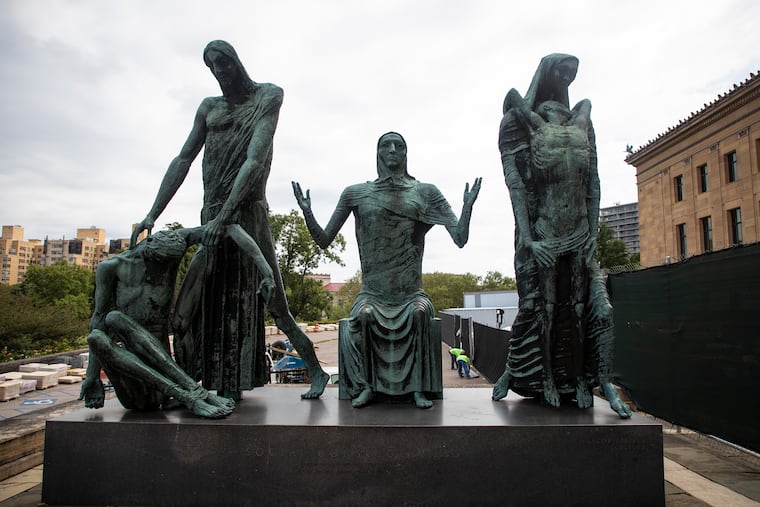Art Museum sculptures that have stood sentry for decades are moving to Penn for 99 years
Enormous sculptures by Louise Nevelson and Jacob Epstein will move to the University of Pennsylvania campus after decades at the western entrance of the Philadelphia Museum of Art.
